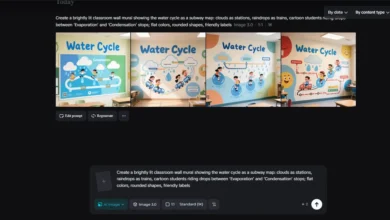
Those working in procurement are now expected to generate more benefits while spending less. As supply chains become increasingly complex and stakeholders demand more, traditional methods and manual tasks struggle to keep pace. Efficient and intelligent management software is invaluable, enabling procurement to transition from merely managing costs to achieving results.
Moving Beyond Traditional Tools
Legacy procurement systems often rely on spreadsheets, resulting in fragmented data and requiring time-consuming manual approvals. Previously, such methods worked well, but they led to isolated teams, hindered progress visibility, and introduced opportunities for mistakes.
With management software from the next generation, these boundaries are removed, as all activities, such as sourcing, contracting, tracking, and risk management, occur on a single central platform.
The primary distinguishing feature of next-gen software is its strong focus on automating and connecting things. When teams integrate their procurement technologies with financial systems, contract depositories, and supplier databases, they can track their activities in real-time. It allows for the use of more time and helps businesses comply with standards when making choices.
Data-Driven Decisions
Advanced procurement systems help transform information into practical knowledge. Modern solutions come equipped with analytics dashboards, predictive models, and key performance indicators (KPIs) tailored to procurement goals. Because they can use live data, teams can see problems like slow suppliers or overspending issues before they affect them.
Using this type of data, procurement professionals can assess how suppliers are performing, identify opportunities to reduce costs, and ensure their sourcing plans align with the company’s overall plans. Therefore, the team becomes more flexible and knowledgeable, ready to tackle any new developments in the market.
The Rise of Relationship-Centric Procurement
The approach to procurement continues to evolve as its purpose does. These days, managers are concerned about prices and delivery, and they also want to establish lasting, beneficial relationships with suppliers. More people are drawn to platforms that prioritize openness, dialogue, and teamwork.
For example, utilizing a comprehensive supplier relationship management platform enables teams to monitor performance, track obligations, and engage with suppliers through a single interface. It encourages customers to trust the company, reduces their risk exposure, and promotes innovation in supply chains.
The Pipeline Manager plays a key role in managing a range of suppliers, focusing on sustainability, and encouraging proper ethical sourcing.
Customization and User-Friendly Interfaces
A key trait of next-gen software is that it is centered around the user’s needs. These tools feature user-friendly dashboards, provide users with the freedom to set up flowcharts, and offer drag-and-drop features that do not require coding.
With cloud-based solutions, you can quickly and easily adjust to your changing needs. The team is working with local suppliers or global contracts, growth and changing needs will not hinder modern tools from working effectively.
Conclusion
The primary advantage of next-generation procurement software is its ability to inform and shape the company’s strategy. By utilizing automation, analyzing data, and collaborating with suppliers, procurement teams can identify more effective ways to operate and improve their company’s performance. As the responsibilities of procurement continue to rise, it is essential to adopt a strong digital approach to keep pace with these changes.
















